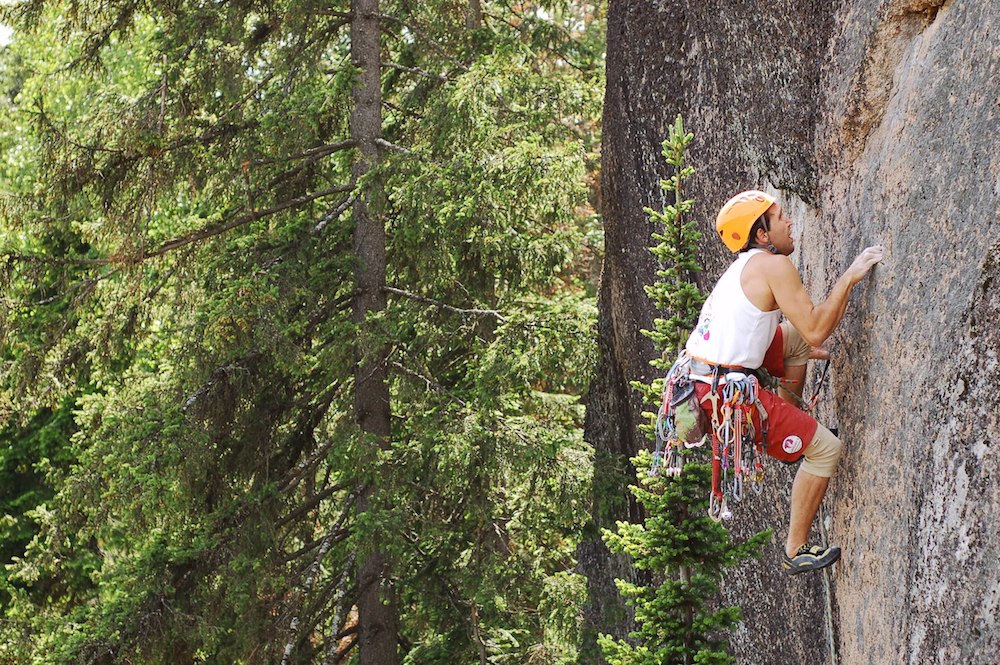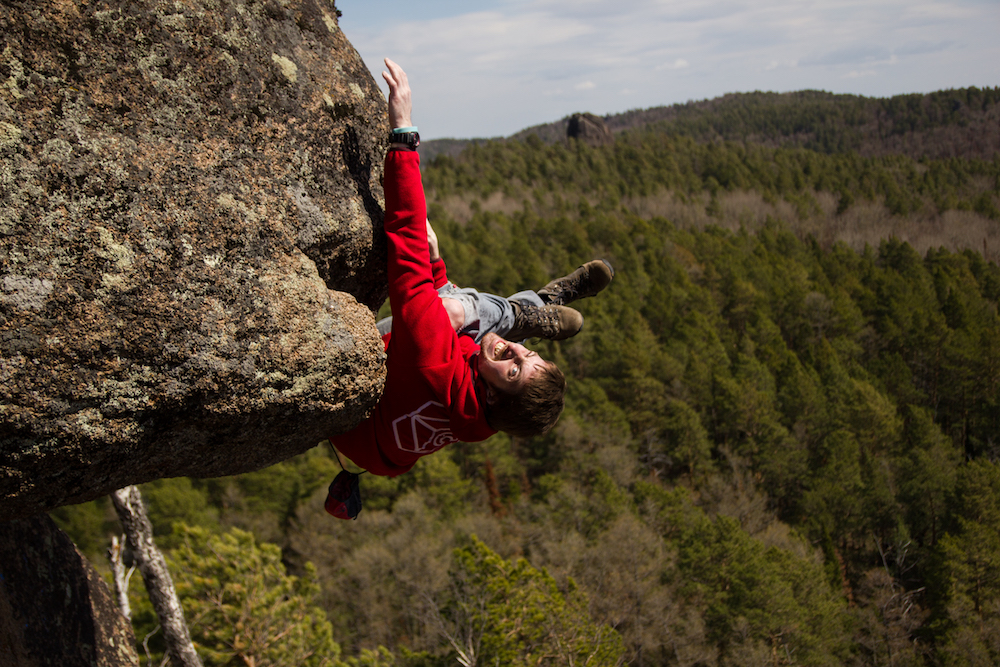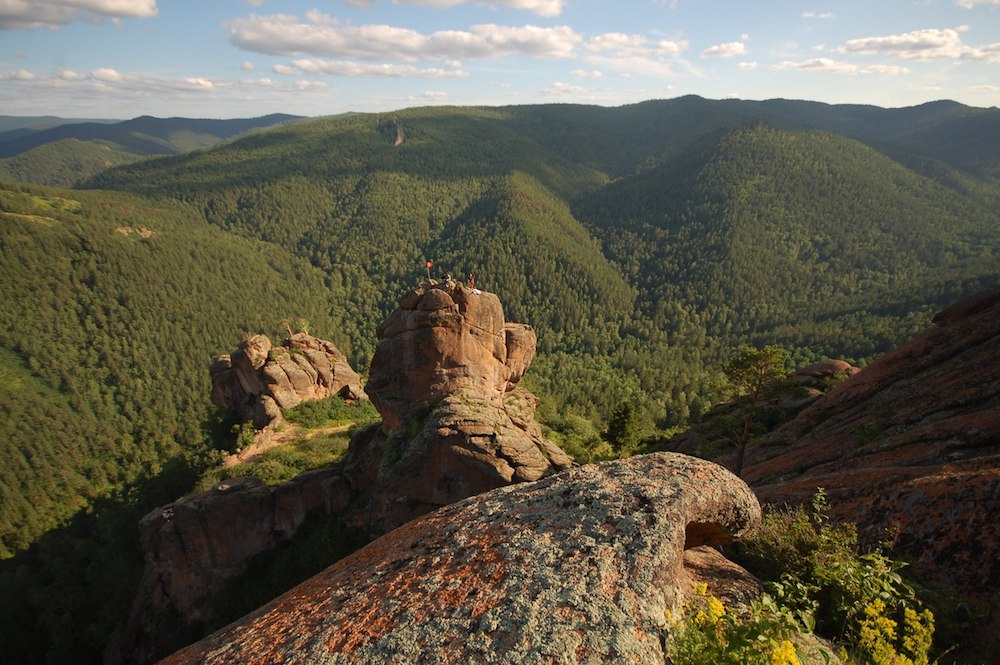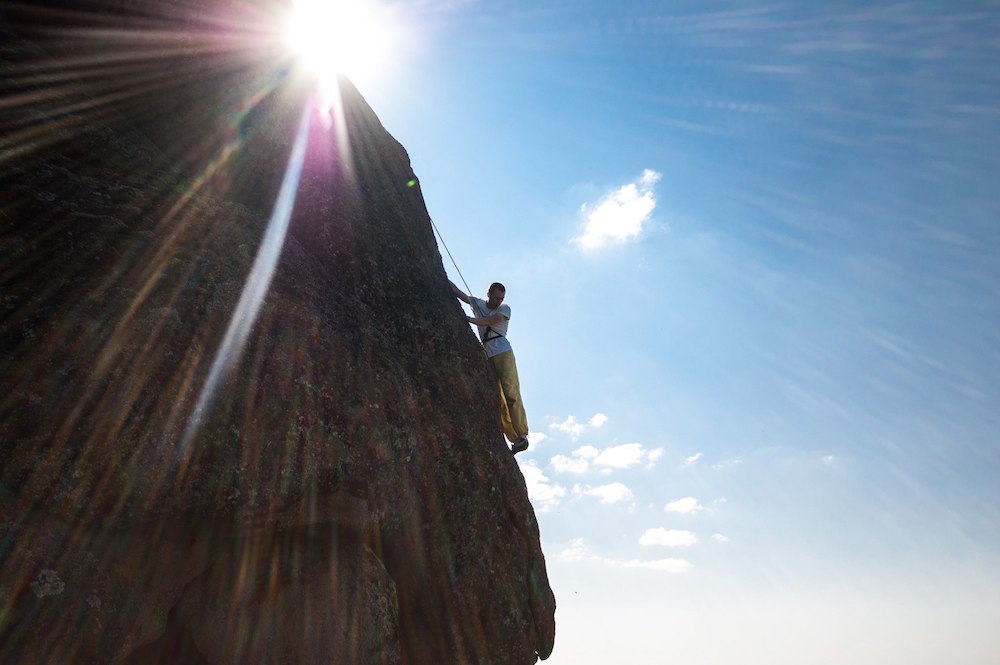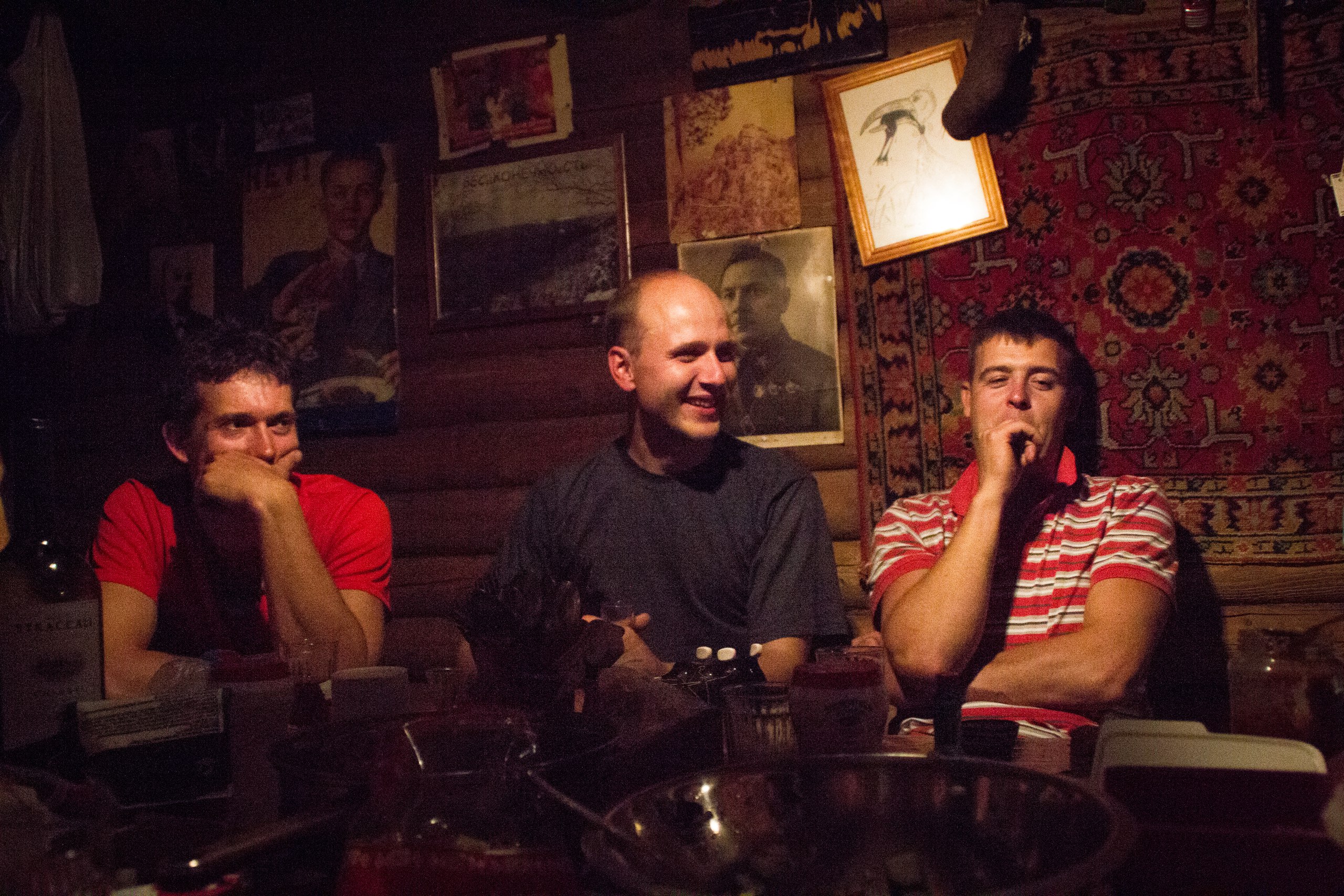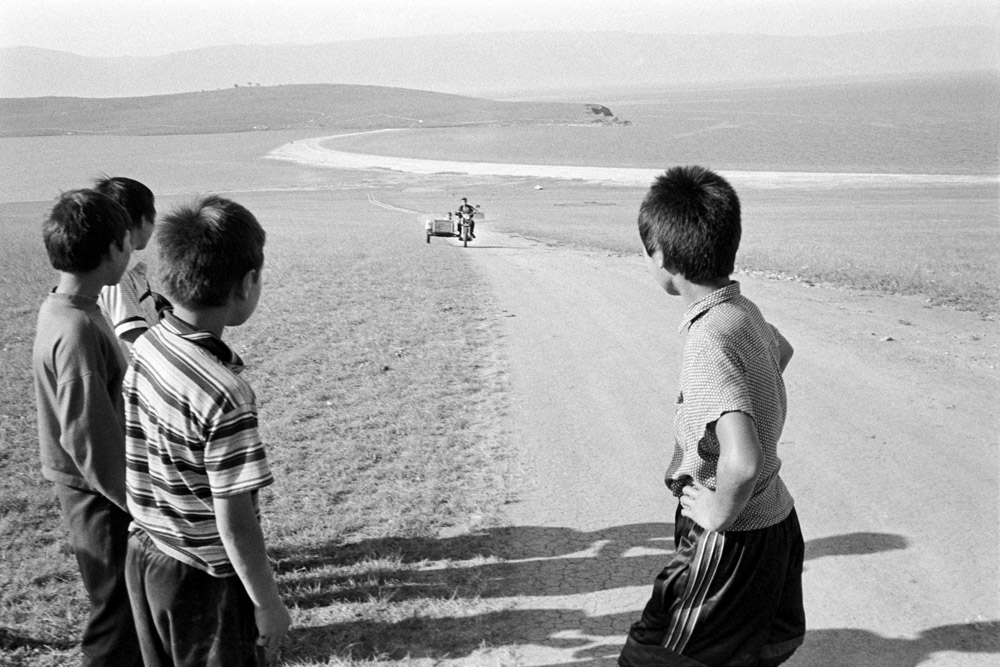Climbing free: would you brave Krasnoyarsk’s towering rock formations?
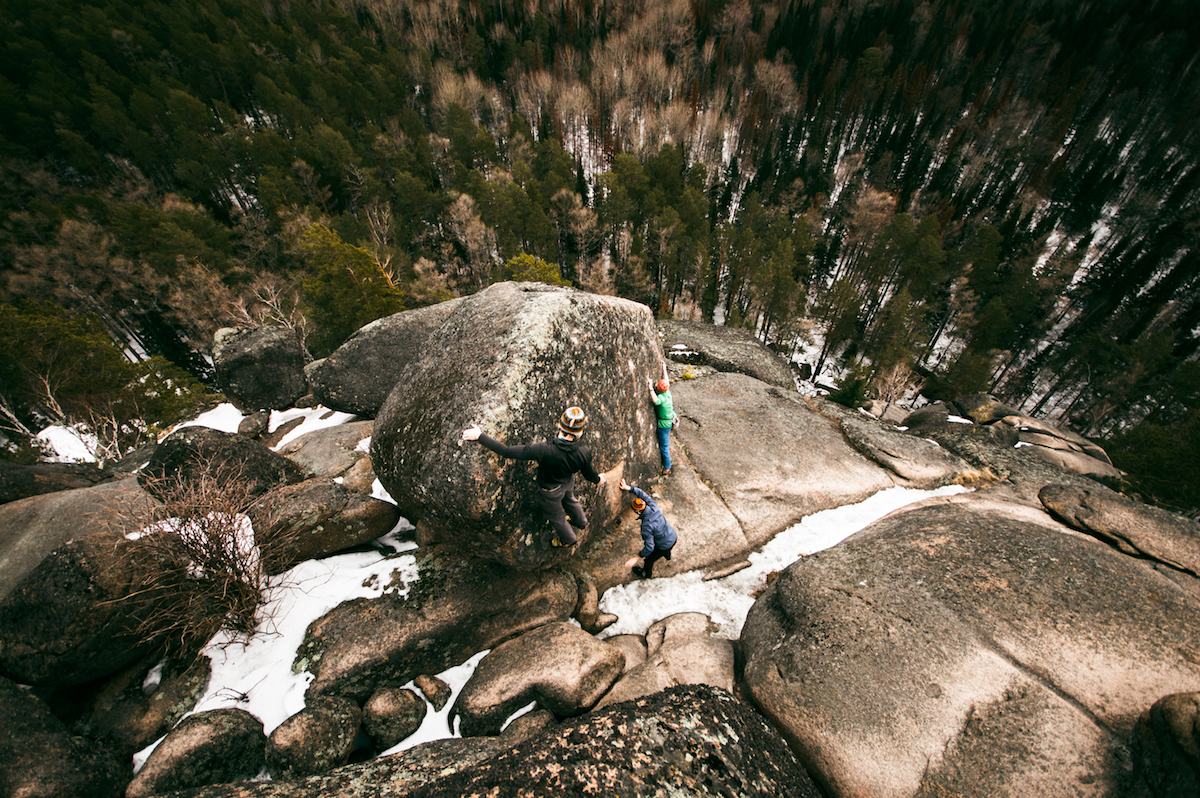
For centuries a hideout for bandits, escaped prisoners and political dissidents, the famous rocky outcrops outside Siberia’s Krasnoyarsk known as the “stolbi” are now a climbing mecca. Daryana Antipova, who grew up nearby, explores the history and traditions of this cult place
A few kilometres from the Siberian city of Krasnoyarsk, there are a cluster of bizarrely-shaped rocky outcrops in the middle of the forest. These are the stolbi (literally “pillars” in English) that are visible from almost any window in the city. For centuries, they served as a hideout for criminals and revolutionaries and in the late Soviet period they were a centre of local counter-culture. Now they nurture an ever-growing climbing community.
Stolbisti traditionally climb without ropes, risking broken limbs and death in case of a fall — although many these days take the safer option of proper climbing equipment. Recognisable by their climbing shoes and guitars, as well as their athletic ability, the Krasnoyarsk movement has its own special norms of behaviour, its own language and unwritten rules about forest living. Many do not consider stolbism just a sport — more a way of life.
When I was growing up in Krasnoyarsk, I was told by my climber parents that one of the tricks used by stolbisti was climbing on one finger — so I practised this at home. When I realised I couldn’t do it, I abandoned my rock climbing dreams. Another famous — and hair-raising — stolbist trick is to descend head-first down the rock face. Climber Denis Trufanov believes that anyone who just walks among the rocks is missing out. “It’s like seeing the world in [only] two dimensions and depriving yourself of the opportunity to look at it in the third dimension,” he says.
Some 8,000 people go to the stolbi on public holidays and weekends, according to official figures. Visitors — couples, school kids, families with babies even 90-year-olds with backpacks — get to the nature reserve along a narrow asphalt road. “I first visited the stolbi when my mother was pregnant with me, and then came quite often with my parents. My grandparents were also stolbists,” says Lyudmila Samotik, who in everyday life is an engineer studying in-flight control systems.
The stolbi are on a protected reserve, so the environment is pristine. There are rocks and stones of all different sizes, scattered among the hills and forests. From different angles they form contrasting and interesting shapes.
All the rocks have been named over the years. Climber Galina Terentyeva describes some of the most well-known: “We have a rock called Grandfather and from a certain point of view you see a male profile with a big nose. Another one is called Feathers — it looks like the giant feathers of a bird sticking out of the ground. Then, there is a rock formation called Grandmother, which looks like an old woman. And there is Middle Finger — my parents told me there was a devil sitting under the ground showing his finger!” Galina’s parents were mountaineers and took their children to the stolbi to climb some of the easiest rocks. She was noticed by her future coach on one of these trips and went on to become a professional climber.
Since the beginning of the 20th century, hikers in the area have grouped together and tried to equip a permanent camps by some of the most remote stolbi: Nelidovka, Vigvam, Jolly Fellows, Demons, Sinners, Angels and others. To get to the most legendary of these camps (usually just wooden huts), you need to cross a log suspended by chains, like a bridge in a medieval castle. Inside the dwellings, which are built into the rock, there are idols and ornaments, as well as practical items for climbing and camping.
“For me, the huts are quite a personal thing. I wouldn’t like to make information about them public,” Samotik says. “It would be like talking about your family to strangers!” According to local legend, the stolbi were traditionally a hide-out for robbers and fugitives. In 1892, the first hut was built under the Third Stolb, which later became the centre of the stolbist movement of Krasnoyarsk writers, musicians, artists, politicians and ex-convicts. In the 1960s, Soviet bards hung out among the stolbi, which were also home to teenage punks and local athletes. Occasionally the police turned up to disrupt the gatherings.
The stolbi have been associated with climbing for decades, if not centuries. In the 1930s, stolbism gave Russia the Abalakov brothers — outstanding climbers who conquered some of the Soviet Union’s highest peaks.
Yegor Matveenko is one of the most famous young Russian climbers to emerge from the stolbi in recent years. At the age of just 13, he climbed the famous Teplykh Loop route. Named after the famous stolbi climber and pioneer Vladimir Teplykh, the route had been unclimbed for decades. “I’ve done this route a few times, not just once,” says Matveenko. “I hope to do it once more this year, I just need to concentrate and have the sun in the right place.” Today, young stolbisti train for bouldering competitions (short routes completed without ropes) and compete internationally.
Denis Trufanov used to work as a journalist, but he is now a mountaineer and in the process of setting-up a museum about stolbi and their culture. He says it will have Soviet guitars and sharovary (the baggy trousers popular for climbing) as well as rare photographs of famous climbers, their equipment, and historic ascents. He gives the example of stolbist Alexander Gubanov, who was at an international gathering of mountaineers in Wales in 1973 when he rescued a Swiss woman stranded on a cliff after the death of her climbing partner. While others deliberated about a rescue, Gubanov climbed up to her without any safety gear. His climbing shoes are now in the British National Museum of Mountaineering and Climbing.
Newcomers are taken to the top of one of the stolbi and spanked with their climbing shoes — the number of blows is determined by the day of the month
“Stolbism is unique in so many ways,” says Terentieva. “You often see a group dressed in overcoats, with a guitar or an accordion, sometimes even with a samovar.” In one climbing tradition, newcomers are taken to the top of one of the stolbi and spanked with their climbing shoes — the number of blows is determined by the day of the month. At the beginning of the climbing season, some young people visit the stolbi in fancy dress.
Foreign climbers are occasionally seen at the stolbi, especially from Nordic countries. But the stolbi have always been a hideout for Russian rebels. The best illustration of this is the huge inscription “Freedom” on the Second Stolb, originally done in 1899 to protest against the police. This word is the essence of stolbism, now embraced by a new generation.



